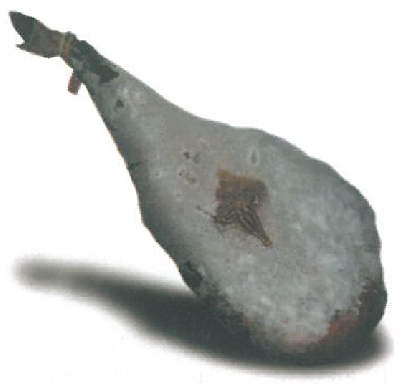Description: The Presunto de Santana da Serra and Paleta de Santana da Serra PGI are hams made from the Alentejana breed of pig. The Presunto is the leg and the Paleta is the shoulder and the pode (the trotter) and rind are kept.
Production method: The pigs are raised in the open air and have a varied diet of grass, cereals, natural vegetation, eggs, small mammals and worms etc. After a fattening period of between 60 and 90 days and at an age of between 12 and 24 months and a weight of at least 90 kg, the pigs are butchered. The leg (with the trotter) and shoulder must respectively weigh at least 7.5 kg and 5 kg. The ham is processed in the local traditional way which is divided into a number of phases: cutting, salting for one to one and a half days per Kg at a temperature of between 0 °C and 5 °C; washing and hanging for between one and three days; drying, for 30 to 60 days at a temperature of between 3 °C and 5 °C; the minimum maturing period is between four and five months for Presunto and two to three months for Paleta; lastly the hams are cured for a minimum of six months for the Presunto and three months for the Paleta. Both the maturing and curing take place in the natural climatic conditions.
Distinctive features: The area where this ham is produced has plains to the north and dense oak and cork oak woods. The climate is hot and dry in the summer and cold and dry in the winter. The type of breed and feed given to the pigs gives their meat and fat its particular characteristics. The climate is ideal for curing the hams naturally without having to resort to smoking or other types of preservation except for the addition of salt. An emblem of the Order of Santiago is branded onto the rind of Presunto de Santana da Serra and Paleta de Santana da Serra PGI hams, an ancient symbol of these freguesias which is where these hams are produced today.
Production area: Presunto de Santana da Serra and Paleta de Santana da Serra PGI is made in the freguesias (hamlets) of Santana da Serra, Garvão, Ourique, Panóias, Santa Luzia and Conceição, in the municipal area of Ourique, in the Beja district.
History: The origins of Presunto de Santana da Serra and Paleta de Santana da Serra PGI are linked to written testimonials dating back to the 14th century which make references to the king's concern in conserving the oak woods of Ourique. Another reference, made in 1699, is a law establishing the use of the oak.
Product specification (pdf)
Producer group
ACPA - Associação de Criadores de Porco Alentejano
Control and certification body
AGRICET, certificação de produtos alimentares, Lda.
Control plan
Control plan (pdf)
Publication in EU official journal
Regulamento (CE) n.º 943/2008 da Comissão de 26.09.2008 - L 258/52
Regulamento (CE) n.º 510/2006 do Conselho de 19.12.2007 - C 308/23
Publication in the Portuguese official journal
Despacho 4597/2005 – 03.03.2005
Aviso 11858/2004 – 19.11.2004
Aviso 9499/2002 – 07.08.2002



